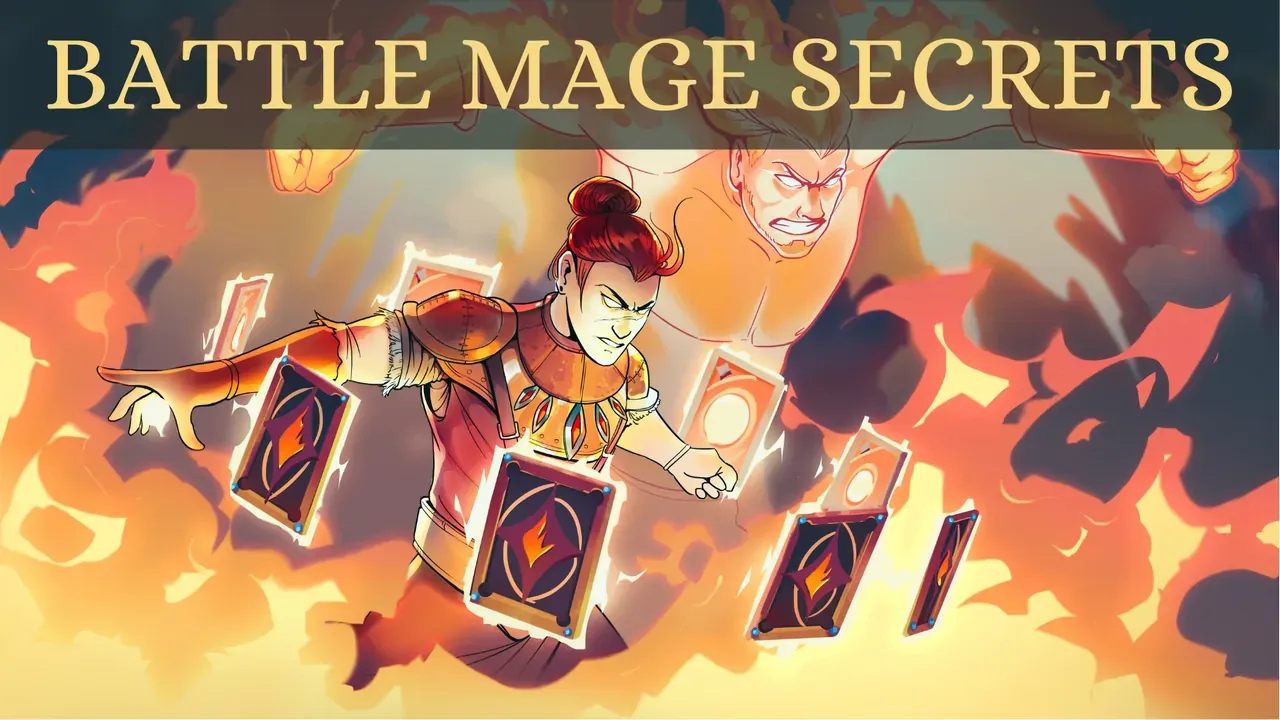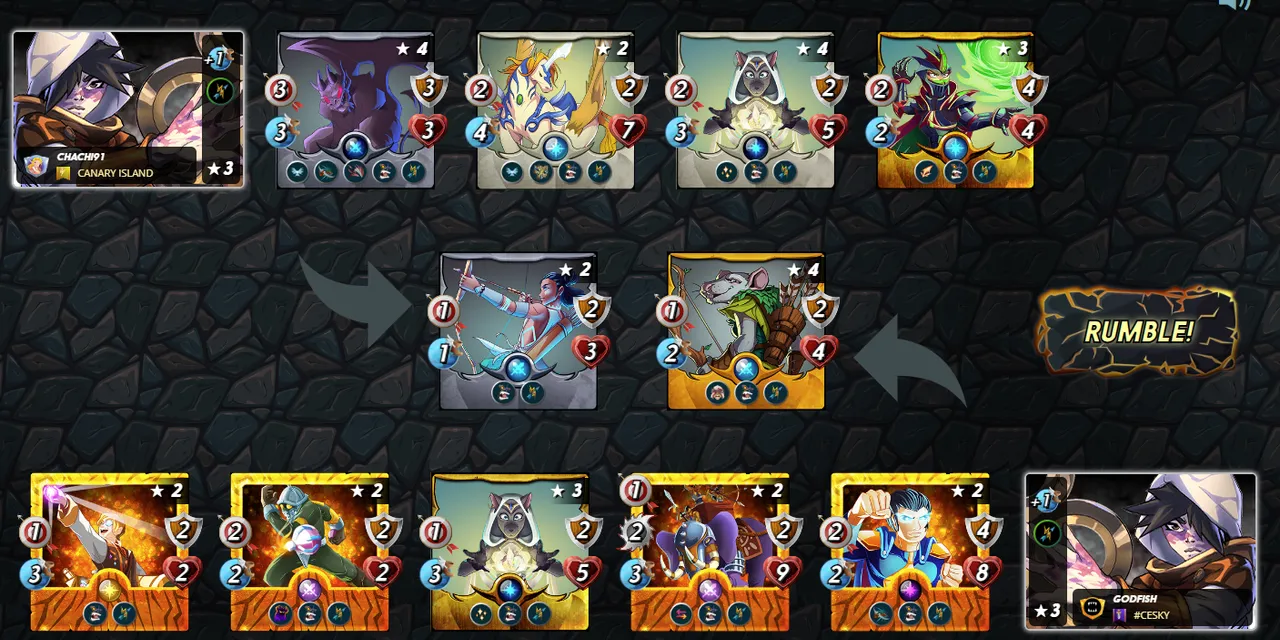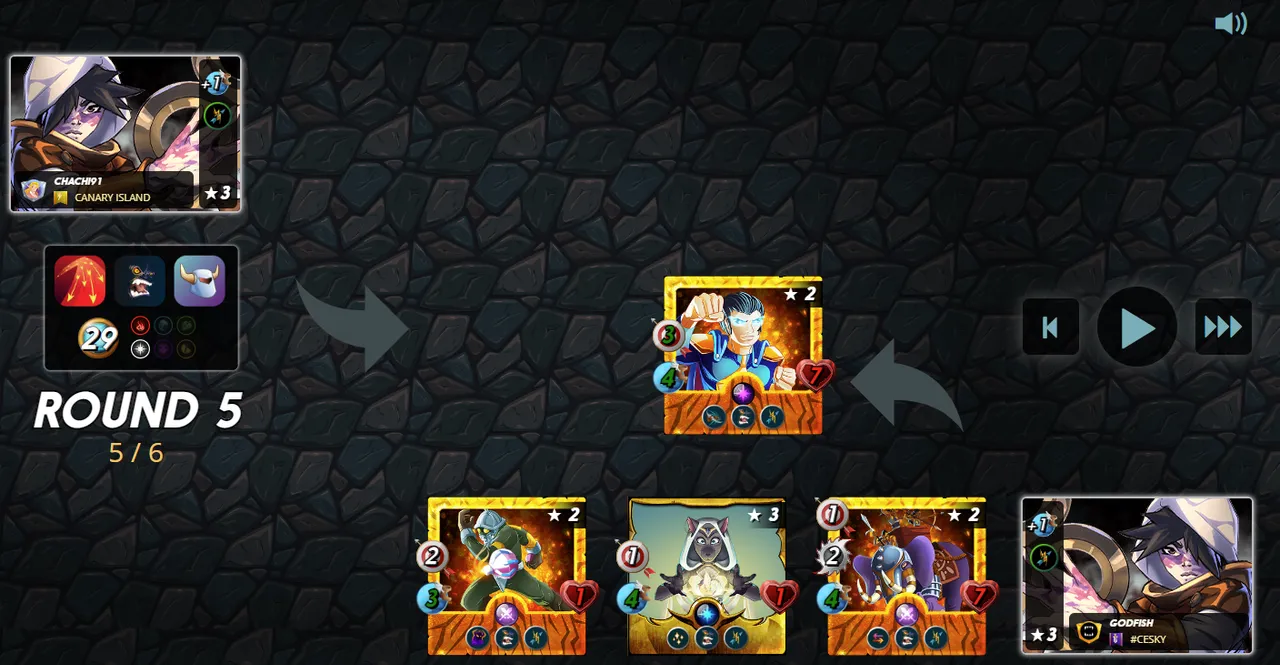I rarely play PC games, but when I do, I often find myself immersed in strategy games, in which I particularly dislike exposing my units to open fire. The 'Going the Distance' ruleset would resonate with me if only I could position my monsters strategically among rocks and cavern havens, where they could strike at enemies marching in gores and then hide. Sadly, there's no such attrition war tactic in Splinterlands, that can demoralize enemy armies. Every single monster is endangered, with a few exceptions for those capable of Camouflage. Nevertheless, 'Going the Distance' is a huge game-changer that makes you come up with a unique strategy. Let me demonstrate that claim through this mid-mana cap battle.

When it comes to summoners suitable for this ruleset, one might assume that General Sloan is the best choice from the Life Splinter. However, there's an even better option: Ilthain. I rarely use Ilthain in other rulesets, but in this modification, his Return Fire combined with +1 speed buffs makes a lethal combo.
It would be a mistake to exclude Venari Marksrat from this pack. I used this rodent as a decoy tank in the first position, making it unable to attack. However, it could sacrifice itself and buff my true tank behind it.
Hero of Beyond is a card I seldom include in my usual strategies. Typically, I prefer Life magic or melee monsters with special abilities that enable them to attack from the second or even any position. However, in this ruleset, Hero of Beyond shines as my chosen hero and tank.
Drafting War Chang feels like a bit of a cheat, as it's more of a melee monster than a ranged one. Anticipating that my opponent would use the same summoner as I did, I thought employing a monster unaffected by Return Fire when it reaches the first position would be advantageous. Although it turned out to be unnecessary in the end, I still consider it a significant strategic move.
Venari Crystalsmith serves as a great healer for low mana cap games. However, I rarely play it when there's more than, let's say, 25 mana available. Life Splinter offers several self-healing cards and even healing summoners, rendering this monster somewhat inefficient. Nevertheless, in this particular battle, Venari Crystalsmith made an effort to keep my Hero of Beyond alive.
On the other hand, Grenadier is a monster that can hold its own against much more expensive ones. With 2 ranged damage for only 3 mana points, it was an obvious choice for this battle.
Speaking of the cost-benefit ratio, Lensmaster is a remarkable monster. For its minimal mana cost, you get a fast, ranged creature with 2 HP.

The Battle
Despite both my opponent and me picking the same strategy and relying on the same summoner, I managed to draft superior monsters. We both invested in a Close Range tank for 7 mana, but mine had almost triple the HP and benefited from the Martyr buff provided by Venari Marksrat. This allowed me to heal my tank effectively, while my opponent failed in healing theirs. Employing War Pegasus in an Armored Up battle was a shrewd move, but it was nihilated by using Portal Spinner and its Scattershot ability. Achieving an actual elimination of a monster with that card required a significant stroke of luck. Had my opponent possessed another 5 mana striker focusing on my front card or even a sniper, their performance would have been stronger.
In general, losing a Splinterlands battle can be attributed to four main reasons:
- Misreading the ruleset and failing to adapt the strategy.
- Misjudging the opponent and devising an ineffective strategy.
- Choosing a summoner that doesn't align well with the battle conditions.
- Drafting weaker cards that are no match for the opponent ones.
In this particular case, my victory can be attributed to having slightly better cards that were positioned more advantageously.
See the full battle yourself!

Posted using Splintertalk
